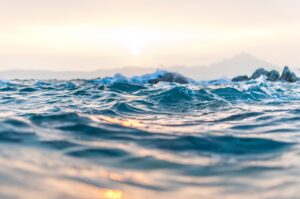 Exploring the underwater environment that covers most of the Earth’s surface is one of the most difficult tasks. The easiest way is the usage of distributed acoustic sensing (DAS) technology. However, the fbgs sensors’ setting is also not so easy because of the environmental conditions. Despite this fact, distributed acoustic sensing has a huge potential for observing processes in the future.
Exploring the underwater environment that covers most of the Earth’s surface is one of the most difficult tasks. The easiest way is the usage of distributed acoustic sensing (DAS) technology. However, the fbgs sensors’ setting is also not so easy because of the environmental conditions. Despite this fact, distributed acoustic sensing has a huge potential for observing processes in the future.
Fiber optic solutions are the new methods of geophysical information registration that can be applied both onshore and offshore. The scientists used transmission time-of-flight of laser pulses inside transoceanic subsea fibers to note seafloor strain. To explore seafloor strain with higher spatial resolution, they utilized a distributed acoustic sensing (DAS) system.
Distributed acoustic sensing technology helps to observe the ocean and solid earth phenomena. The scientists applied a fiber optic cable and a distributed acoustic sensing (DAS) unit operating onshore. DAS technology uses a photonic device that sends short pulses of laser light through fiber optics. DAS detects the backscattering set by strain in the cable caused by stretching.
The researchers could get even more data than expected. They could record underwater earthquakes, volcanic activity, and a range of micro hydrodynamic signals. The scientists monitored the acoustic waves by alterations in laser light along the fiber optic cable. Recordings of a small earthquake wavefield demonstrated several fault zones underwater. Distributed acoustic sensing could picture earthquake hazards in the coastal oceans and give new data about fault orientations and seafloor structures. The DAS system displayed the state of the sea and its changes during a storm cycle. These observations proved the necessity and potential of this method for marine geophysics.
There are still aspects of this distributed acoustic sensing research that should be improved. One of them is the fact that current DAS instruments can only see lower frequencies. However, such frequencies are considered to be low for acoustics, but it is high for seismologists and enough to locate boat signals. The research team also explores the possibilities of tracking mammals, for example, whales with the help of distributed acoustic sensing technology. The second challenge is the fact that the scientists don’t know where exactly the fiber optic cable is. Because seabed bathymetry can affect the signals and influence DAS senses. Nowadays, it is possible to use only the initial part of the fiber optic cable, up to 200 km. But it already allows capturing a number of spheres of science.
As a result of the research, the observations with the DAS system during just a few days helped to create a map of an unknown fault system and detect several dynamic processes in the water. The distributed acoustic sensing technology could help to get rid of a huge gap in ocean sensing.
According to the researchers, the production of fiber optic systems based on the DAS technology can be easily automated. However, there is still a space for developing and finding new ways of optimization.
Optromix is a DAS system manufacturer that provides top of the line distributed acoustic sensing systems suitable for monitoring commerce networks. If you have any questions or would like to buy a DAS system, please contact us at info@optromix.com

